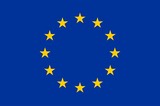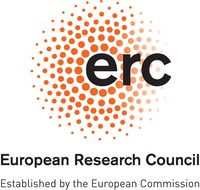Sulphur & Carbon isotopes and fractionation processes: Apart from the main isotope 32S (≈95.02%), small amounts of 33S (≈0.75%), 34S (≈4.21%), and 36S (≈0.02%) are present in all terrestrial sulphur compounds, albeit with slight variations. COS is taken up by the terrestrial biosphere (e.g. soil bacteria [Kamezaki et al., 2016]), or chemically destroyed in the atmosphere by known oxidation processes [Lin et al., 2011; Hattori et al., 2012; Schmidt et al., 2012; 2013]:
~3% COS + OH ➝ CO2 + HS
~17% COS + O(3P) ➝ CO + SO
~80% COS + hu (< l < 300 nm) ➝ CO + S
(Here, percentages refer to stratospheric oxidation quantified in Sheng et al. [2015]. The sulphur products are further oxidized to SO2 and SSA [Höpfner et al., 2013; Brühl et al., 2015])
In these processes, the removal of the light isotopologue normally proceeds faster than the removal of the heavy isotopologue, a temperature dependent process known as isotopic fractionation. Fractionation thus “marks” a sample with a process-specific isotope ratio, in the sense that the “remaining” S-pool of COS will be depleted in light isotopes. The enrichment of a particular isotopologue relative to the standard Vienna Canyon Diablo Troilite (V-CDT) is denoted by d3xS, with x = 3,4,6:
d3xS = [(3xS/32S)sample/(3xS/32S)V-CDT – 1]
The potential of a process (the reaction COS + OH is taken as example) to produce isotopic enrichment or depletion in the remaining COS pool can be quantified by the isotopic fractionation constant ϵ:
3xϵ = [(3xk/32k) – 1]
Where 3xk denotes the rate constant of the CO3xS + OH reaction. The negative value of 34ϵ [Schmidt et al., 2012] thus indicates that the lighter COS isotopologue reacts faster, and that the remaining COS will be enriched.
Values of d and ϵ are commonly multiplied by 1000 to report values in per mill (‰)
The carbon atom in COS has two stable isotopes: 12C (≈98.93%) and 13C (≈1.07%), and enrichment of 13C is given relative to the standard Vienna Pee Dee Belimnite (V-PDB):
d13C = [(13C/12C)sample/(13C/12C)V-PDB – 1]
Little is known about the C-isotopes in COS, but studies indicate that stratospheric removal of COS should lead to a substantial enrichment in the remaining COS [Schmidt et al., 2012; 2013].

